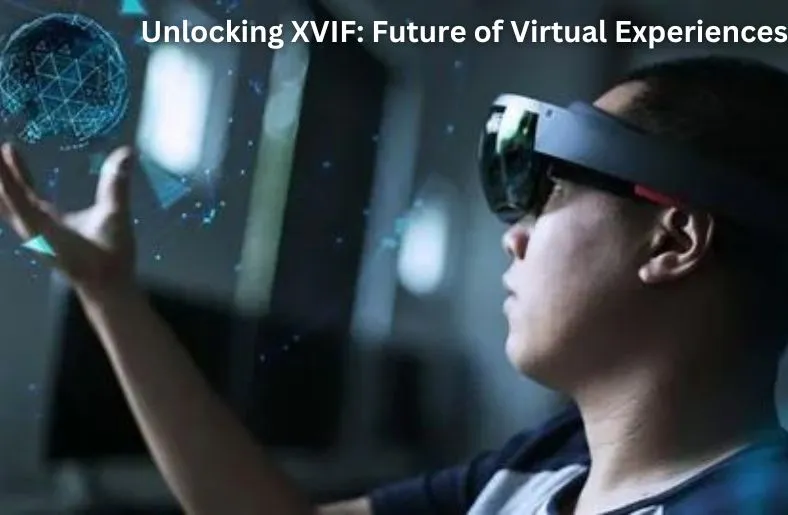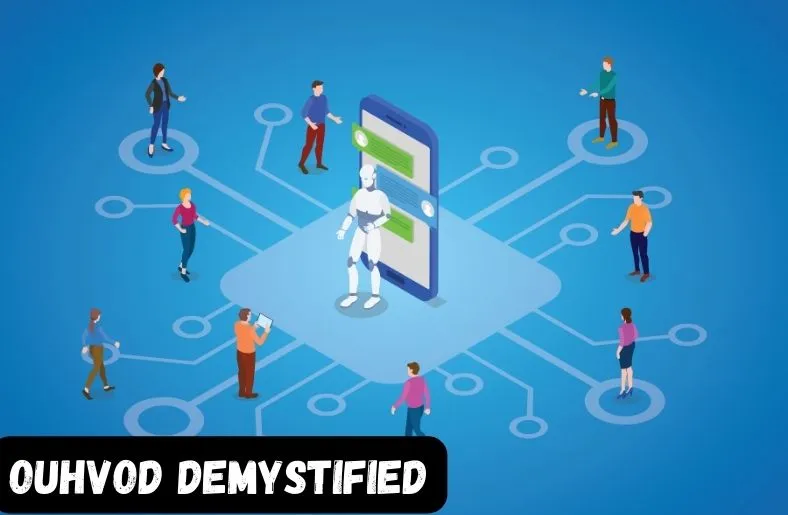XVIF, or eXtended Virtual Immersion Framework, represents an exciting advancement in the realm of virtual reality. It’s not just another technology; it’s a paradigm shift that is transforming how we experience virtual environments. In a world where technology is constantly evolving, XVIF stands out as a promising innovation that has the potential to revolutionize industries ranging from gaming to healthcare. By bridging the gap between the physical and virtual worlds, XVIF opens up new possibilities for immersive experiences that were previously unimaginable.
What is XVIF?
XVIF, short for eXtended Virtual Immersion Framework, represents an innovative approach to immersive virtual experiences. It aims to blur the lines between the physical and virtual worlds by integrating sensory feedback directly into the user’s environment. Unlike traditional VR setups that rely on headsets and controllers, XVIF offers a more seamless and immersive interaction, enhancing the overall user experience.
Traditional virtual reality relies on headsets and controllers to simulate interactions with virtual environments. While these setups can provide immersive experiences, they often feel disconnected from the real world. XVIF takes a different approach by incorporating sensory feedback directly into the user’s environment. This means that instead of relying solely on visual and auditory cues, users can feel and interact with virtual objects as if they were real. This heightened sense of immersion enhances the overall experience and opens up new possibilities for applications across various industries.
Evolution of Virtual Reality
Virtual reality technology has come a long way since its inception. Early VR systems were characterized by bulky headsets and limited graphical capabilities, making them impractical for widespread adoption. However, advancements in hardware and software have led to the development of more sophisticated VR experiences, with realistic graphics and immersive environments. Despite these improvements, traditional VR setups still face challenges in providing a fully immersive experience. Users often experience a disconnect between their physical movements and the virtual feedback they receive, leading to a sense of detachment and disorientation. This is where XVIF comes in. By integrating sensory feedback directly into the user’s environment, XVIF aims to bridge the gap between the physical and virtual worlds, offering a more seamless and immersive experience.
Promise of XVIF
XVIF holds immense promise in revolutionizing virtual experiences. Unlike traditional VR setups that rely on external devices like headsets and controllers, XVIF integrates sensory feedback directly into the user’s environment. This means that users can interact with virtual objects as if they were real, blurring the boundaries between the physical and virtual worlds. Imagine being able to feel the texture of virtual objects or sense the movement of virtual characters around you. With XVIF, these experiences are within reach. This heightened sense of immersion not only enhances entertainment experiences like gaming but also opens up new possibilities for applications in education, healthcare, and beyond. By seamlessly integrating virtual elements into the real world, XVIF has the potential to transform how we interact with technology and each other.
Applications of XVIF
XVIF technology is not limited to one industry but spans across a diverse range of sectors, each benefiting from its transformative capabilities. In the gaming industry, XVIF offers unparalleled realism and immersion, allowing players to step into virtual worlds like never before. Imagine being able to feel the impact of virtual objects or sense the presence of virtual characters around you. With XVIF, these experiences are possible, revolutionizing the way we play and interact with games. But gaming is just the tip of the iceberg. In educational settings, XVIF can be used to create immersive learning experiences, allowing students to explore complex concepts in a tangible and interactive manner. From virtual field trips to interactive simulations, XVIF has the potential to enhance the way we teach and learn. In healthcare, XVIF enables realistic simulations for training medical professionals and facilitating rehabilitation. Surgeons can practice complex procedures in a virtual environment, while patients can undergo therapy sessions in the comfort of their own homes. Additionally, XVIF has applications in training simulations, architectural visualization, and more, demonstrating its versatility and potential impact across various sectors.
Challenges and Considerations
While XVIF holds immense promise, its widespread adoption is not without challenges. One of the primary challenges is the high implementation costs associated with XVIF technology. From hardware expenses to software development costs, the upfront investment required to adopt XVIF can be significant, particularly for smaller organizations with limited resources. Additionally, compatibility issues may arise when integrating XVIF with existing systems and platforms. Ensuring seamless interoperability across different XVIF systems is essential to maximizing its potential benefits. However, perhaps the most significant challenge is the ethical considerations surrounding XVIF technology. As XVIF relies on sensors and tracking technologies to monitor user interactions, concerns regarding privacy and data security inevitably arise. Addressing these concerns is crucial to ensuring the responsible development and deployment of XVIF technology. By implementing robust security measures and transparent data policies, stakeholders can mitigate risks and build trust among users, paving the way for broader adoption and acceptance of XVIF.
Future of XVIF
The future of XVIF is bright, with ongoing research and development efforts poised to unlock new possibilities and applications. As technology continues to evolve, XVIF has the potential to redefine how we interact with virtual environments, blurring the boundaries between the physical and virtual worlds even further. Imagine a world where virtual experiences are indistinguishable from reality, where users can interact with virtual objects as if they were tangible. With XVIF, this future is within reach. Continued advancements in XVIF technology will unlock new possibilities for immersive experiences, revolutionizing industries and enhancing the way we perceive and interact with virtual reality. From gaming and entertainment to education and healthcare, XVIF has the potential to transform how we experience the world around us, opening up new horizons for innovation and exploration.
Conclusion
In conclusion, XVIF represents a revolutionary step forward in the realm of virtual experiences. By integrating sensory feedback directly into the user’s environment, XVIF offers a more immersive and cohesive interaction that bridges the gap between the physical and virtual worlds. From gaming to education to healthcare, XVIF has the potential to transform industries and enhance the way we perceive and interact with virtual reality. As XVIF technology continues to evolve, it’s essential for stakeholders to stay informed and explore its applications across various sectors, as it continues to revolutionize the way we experience the world around us.
For more informative blogs, visit Techvizzer.





